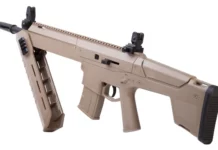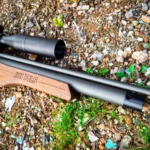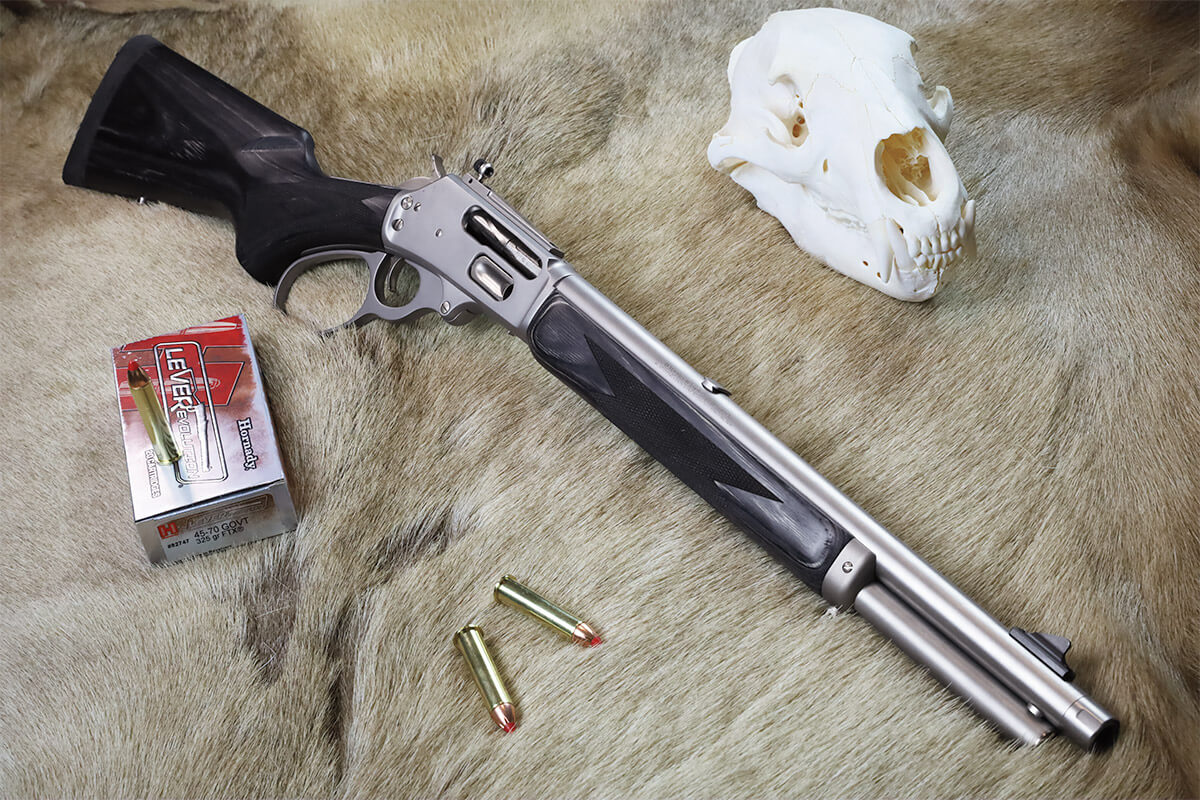
Marlin 1895 .45-70 Trapper Lever Gun (RifleShooter photo)
The release of the Ruger-made Marlin 1895 SBL .45-70 Gov’t rifle last year was very well received, and Marlin is following that up with the 1895 Trapper. It has the same chambering, satin stainless finish and gray laminate stock as the SBL, but the Trapper version has a shorter, 16.1-inch barrel. Its barrel is cold hammer forged out of 410 stainless steel, has a 1:20 twist and is threaded 11/16×24 for mounting a suppressor or other muzzle device.
With its shorter barrel and reduced overall length of 34.25 inches, the Trapper is ideal for anyone who wants to add a can to their rifle without making the gun so long that it becomes unwieldy or for those who hunt in tight cover and want the shorter barrel because it’s handier. Weight is 7.1 pounds, and the gun’s balance point is centered at the loading port, which gives it that “between the hands” feel shooters love.
The triggerguard plate, receiver and lever are all precision CNC machined from 416 stainless steel forgings. An oversized lever loop makes it easy to cycle quickly and reliably. The bolt features a side-mounted extractor on the bolt body and a spring-loaded ejector that rests in a recess within the receiver. There’s also a crossbolt safety located on the upper rear portion of the receiver. The hammer has both half- and full-cock positions.
Table of Contents
1895 Trapper
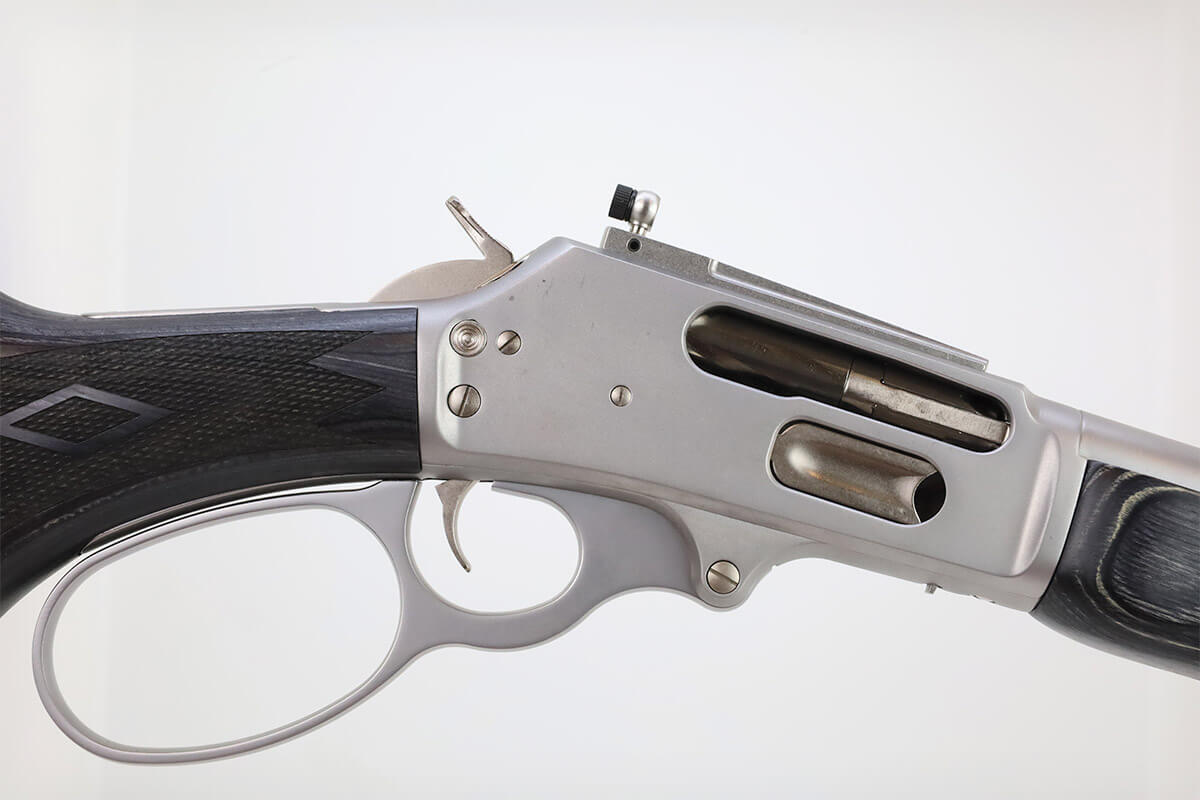
The Trapper model features Skinner front and rear sights. The rear sight is an aperture design, and the aperture unscrews so it can be replaced with larger or smaller aperture sizes. The front blade sight is sturdy and sports a bright white stripe along the spine that is easy to see in low light. There’s also a dovetail in the barrel that allows you to add a buckhorn-style rear sight if you’d like. Unlike the SBL, there is no Picatinny scope rail.
The laminate stock on the Trapper has a darker color scheme than that found on the Ruger/Marlin 1895 SBL rifles. A dense recoil pad about 3/4 inch thick with a spacer is perfectly mated with the contour of the stock. The iconic Marlin horse and rider logo is laser engraved onto the grip, and there’s an “RP” proof mark on the left side of the barrel. “Mayodan, North Carolina,” Marlin’s new base of operations, is stamped on the barrel as well, and serial numbers for these rifles begin with the prefix “RM” for Ruger Marlin.
Even the trademark bullseye design that has graced Marlin rifles for decades can be seen on this gun, albeit with a red center in homage to the Ruger brand. “The 1895 Trapper is an excellent early addition to our new Marlin line,” said Mickey Wilson, vice president of operations at Ruger’s Mayodan, North Carolina, facility. “It’s easy to handle, sports a great sight system and is powerful enough to take any North American large game animal, as well as offering protection to guides and fisherman from potentially dangerous animals.”
At just over six pounds, the trigger isn’t light, but it’s clean and sufficient for an open-sighted lever gun. I managed to punch groups right at an inch from 50 yards. With the Trapper’s shorter barrel, the Federal load ran about 100 fps slower than spec velocity, and the Hornady load was almost 200 fps slower.
Field Function
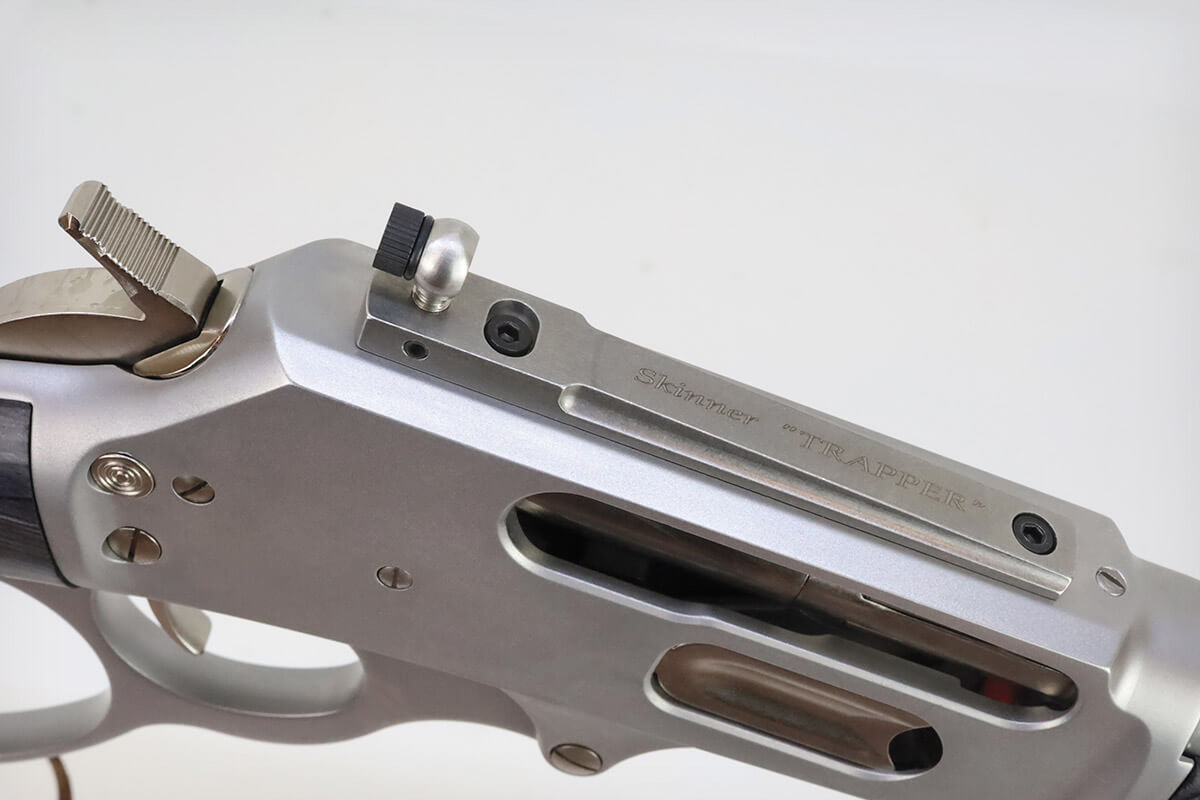
The Marlin Trapper functioned flawlessly with one exception. I ran dry during one drill, and in my haste to reload, I didn’t fully seat the last cartridge in the magazine tube. When I attempted to cycle the action the bolt locked in the open position with the lever frozen, which is a telltale sign of this error. This common failure with Marlin rifles is entirely preventable as long as the shooter has the presence of mind to fully seat each round. Recoil from the Trapper is stiff, especially from the bench. Off the bench the rifle isn’t unpleasant at all, and with the gun held firmly and fired from a solid stance, it’s possible to deliver fast follow-up shots.
At a suggested retail price of $1,349, the 1895 Trapper is $50 cheaper than the SBL. That’s higher than Henry’s All-Weather Lever Action .45-70, but the Henry holds one less round; has a longer, unthreaded barrel; and lacks the Trapper’s impressive wood and Skinner sights. Is there still a place for big-bore lever guns in the hunting arena? Absolutely. For hogs, deer, elk, moose or anything that has the potential to bite back, there are few better options, and that’s because nothing handles like a lever-action carbine.
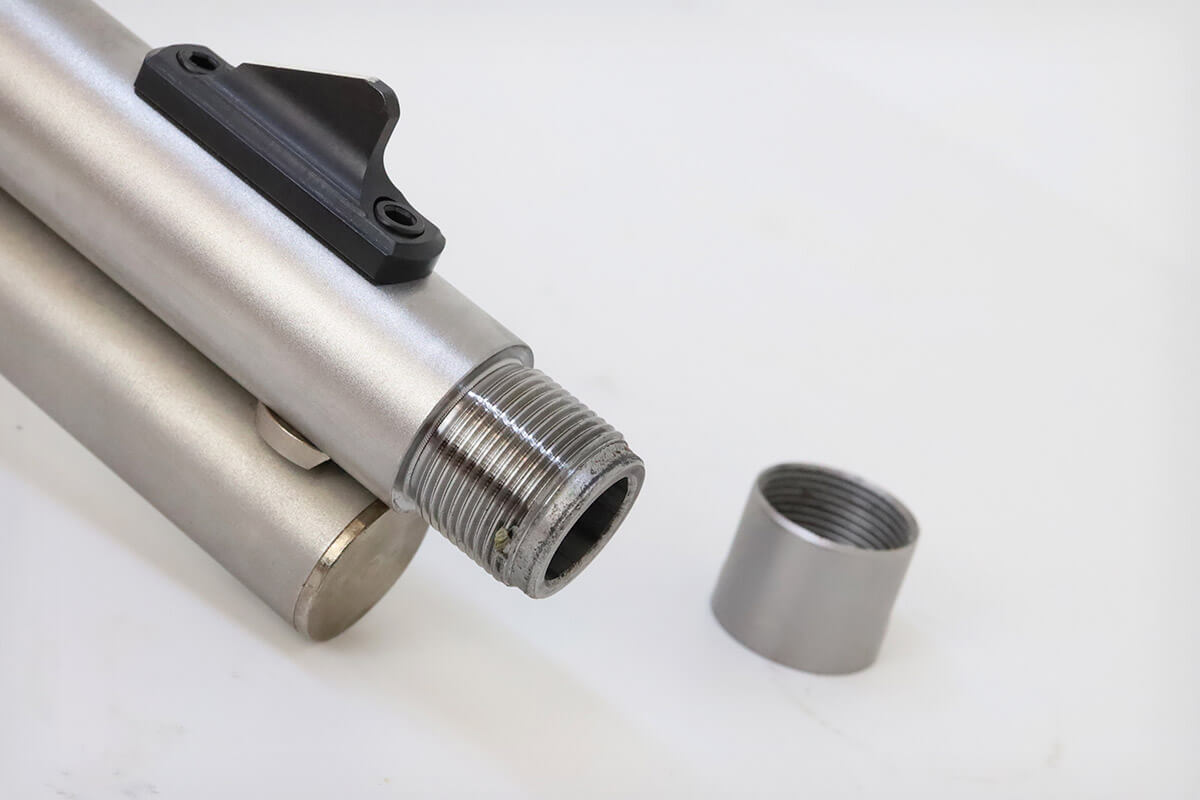
There’s also no doubt that these guns will be gobbled up by Marlin collectors, but you don’t need a dogmatic reason to buy one. These American-made lever actions are simply fun to shoot. That’s reason enough to own one.
Marlin 1895 Trapper Specs
- Type: Centerfire, lever action
- Caliber: .45-70 Gov’t
- Capacity: 5 rds.
- Barrel: 16.1 in., stainless; 1:20-in. twist, threaded 11/16×24
- Overall Length: 34.25 in.
- Weight: 7 lbs., 1 oz.
- Stock: Gray, laminate
- Finish: Satin stainless
- Trigger: 6 lbs., 1 oz.
- Sights: Skinner adjustable aperture rear, Skinner blade front
- MSRP: $1,349
- Manufacturer: Marlin Firearms


























